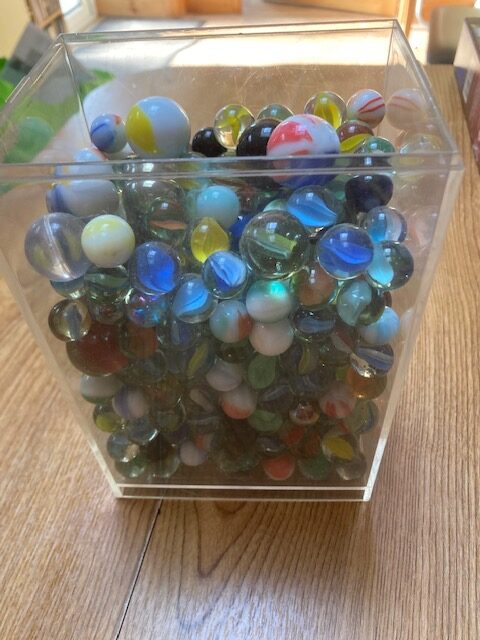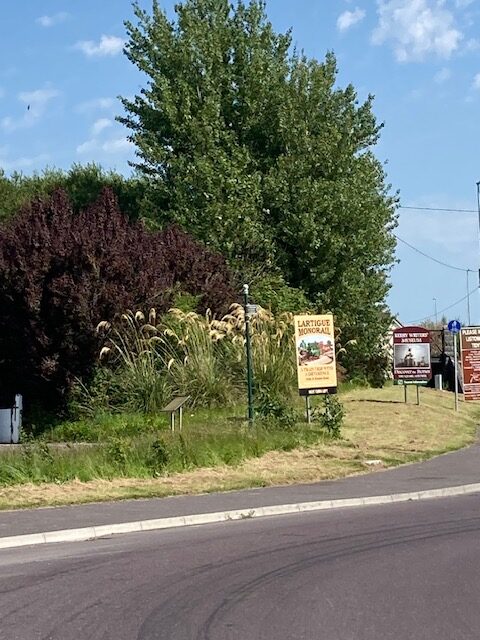
On the Ballybunion Road
<<<<<<<<<
“The Old Order Changeth….”

This store is due to be demolished to give way to the new one and the greatly extended car park.
<<<<<<<<
Parents and Friends Garden Fete
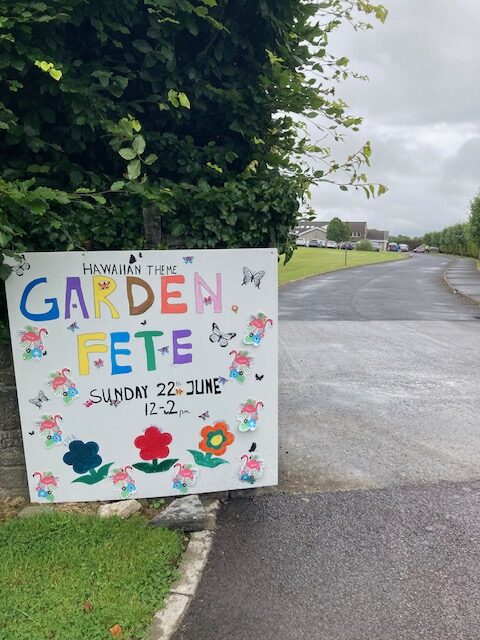
People worked really hard to make this one a success. The results of their efforts meant a great few hours for us all. Well done, all.
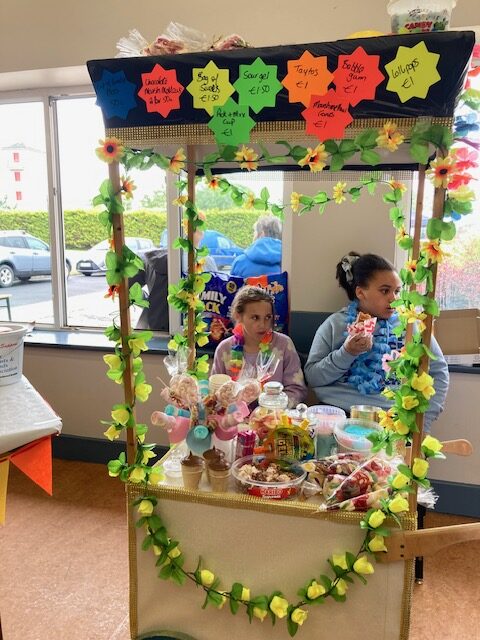
The theme was Hawaiin. Nobody told the weather though.
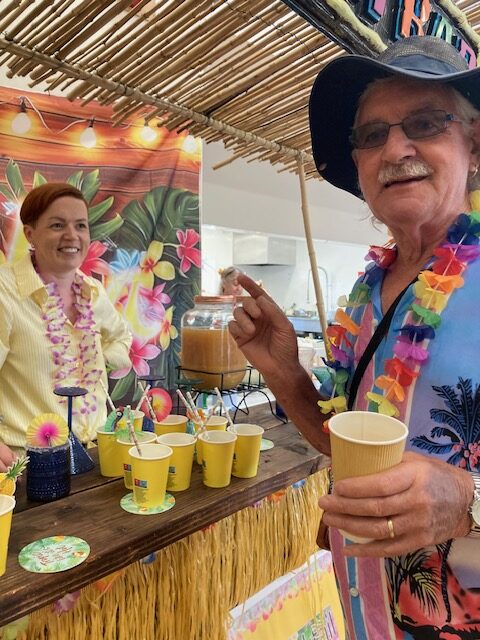

Aloha, ladies

There were some fabulous prizes to be won.
( I’ll have a few more photos next week.)
<<<<<<<<
A Few more from my Trip to Knockanure




A lovely tribute to a beloved pastor



Today’s PP has a dedicated parking spot.
<<<<<<<<
Making sense of it all. Wordsmith Writers Group
Mick O’Callaghan
Friday June 13th, 2025
Perhaps man had 100 senses and when he died only the 5 senses, we know of perish with him and the others remain. Checkov
In this deeply philosophical prompt, I think that we are challenged to look at ourselves
In school we were always taught that we had 5 senses, sight, taste, smell, touch and hearing. We also learned that there was an interaction between all 5. Our taste buds will influence what we eat but so too will smell and its appearance. If food smells bad or is not well presented visually, we will be loath to eat it.
At home we were made aware of another sense. If we were in doubt about doing something we were told to go with our gut instinct.
.
Initially in this writing prompt Checkov is basically telling us that there is more to life and living than what we experience through the basic five senses. He is also saying that when people die, they leave a lot of themselves behind.
Last September we had a family reunion of relations from America, England and Ireland. They all wanted to experience the lives and homesteads of their forebears. We drove to Béal Trá in Barrow, Ardfert and we saw the foundations of the ancestral home. There was a preservation order on some of these because they were built in famine times. We walked through them and took lots of photographs. One of my American cousins said, as we walked through the old outhouses ‘Don’t you feel a great sense of history here, he could feel it in his bones. When he touched the stone wall and as his daughter was filming him, his emotions took over and he shed copious tears.
We surely were reliving emotional history as most of my relations had never visited here before. As I walked through the ruins of my great grand uncle’s kitchen, I could smell the plug tobacco from his pipe and the scent of the timber logs burning in his fire. I could see and experience his roguish smile, and I could see his súgán chair and large wooden table. Jim Bob O Connell was an ex-policeman in Dublin, and he had a sharp sense of security, sleeping with a shot gun across his bed every night. I re envisaged that scene as I was walking about the remnants of the old homestead. I heard his roguish smile in my ear, and I felt his sense of excitement when we brought him up fresh bass from the sea. Now as I visualised the fresh fish we caught, I can feel and sense the fishy scales on my hands while my sense of smell was activated by the flames shooting out from the frying pan cooking the fish swimming in a sea of melted butter.
I left this place over 60 years ago and Jim Bob is now dead over 40 years. When we walked the ground of our ancestors, we experienced all those extra dimensions of his life which he left behind, through our basic five senses.
The memories and recall of these events are still alive in my head today. My nose can detect many long-lost healthy salt sea air smells. When I went outside the door of Jim Bob’s home I began to relive more of my youthful journeys along that historic Barrow. Banna strand. My brain was on overdrive processing all the varied images of people and places I knew so well in my youth. They were all long since dead but were alive to me now. I felt their presence and their influence on me. I had a real sense of how they had shaped my life and values.
As I strolled down the lane, I was feeling the soft sea mists of long ago and how we sheltered under the rickety hay shed or under the bushes till it passed by. I was tasting the lovely plum jam which my granny made from the plums growing there.
I can also remember many feelings of hunger and thirst during our many visits there as our families were strictly three meals a day people and snack bars were unheard of.
As we strolled here in our younger days we fell, got cuts and injuries, we felt a sense of pain but never mentioned pain threshold. Everything was cured with a splash of iodine or mercurochrome and after their application we were asked if we felt any pain now. No one ever did.
In life we have our five basic senses, but we feel much more in our everyday existence.
I can put my finger up to my nose, put my hands behind my back, tie my laces and perform such complicated acts as walking, co-ordinating movements, climbing, eating, chewing, swallowing, speaking and breathing during my time on planet earth. We feel cold and heat, anxiety, isolation and we have all experienced a sense of fear in some situations in our lives. There are many senses and situations that we must manage every day. We manage them well enough but sometimes experience stress.
Then people often comment and say that someone has a great presence about them with a sense of confidence oozing out from them. They are portrayed as role models.
We also see exemplary people who influence us greatly. Mother Teresa of Calcutta is now dead, but she has left behind a great legacy. We can easily recall her great sense of caring, her sense of selflessness and her compassion in relieving deprivation in the ghettos of Calcutta. I remember being lucky enough to be in her presence in the Mansion House in Dublin. You felt you were in the presence of greatness, and I was certainly inspired by her and in awe of her work
Checkov himself during his all too short life on earth displayed a great sense care of family. He suffered from Tuberculosis all his life but from an early age he wrote short stories and sold them to make money to pay for his family’s education.
When I was growing up, we were advised to use our sense of hearing more than our act of speaking which I generally adhere to in my life. My senses are always turned on, but I try to ensure while walking, talking or listening that I am paying proper attention, benefitting from my surroundings and from people who talk to me.
At this stage of my life, I reflect on things regularly, I walk and eat more slowly, and I listen to my body, my constant sixth sense. While strolling I do not wear earmuffs, earplugs, or other appendages preferring to listen to the ambient sounds of nature such as birds singing, streams flowing or leaves blowing in the wind.
I thank my forebears for all the wonderful memories they left behind in the collection of their accumulated 95 senses .
<<<<<<<
Clarification
A week is a long time in local politics. Obviously the decision was already taken but the signs dedicating the new roundabout to Albert Kennedy had not yet been erected when I took my photos last week.

<<<<<<<
A Fact
Debate over. It’s concluded by scientists that the chicken came before the egg. The protein that makes egg shells is only produced by hens.
<<<<<<<<



